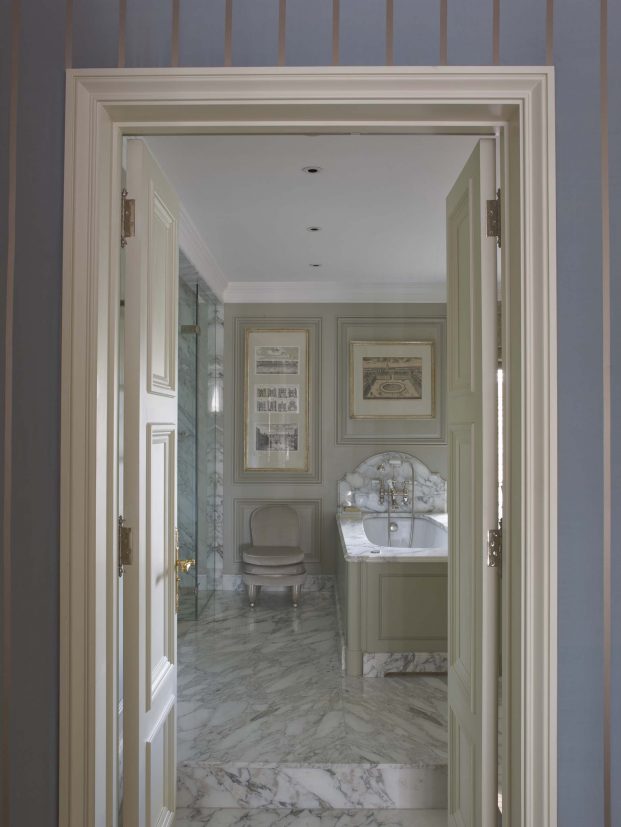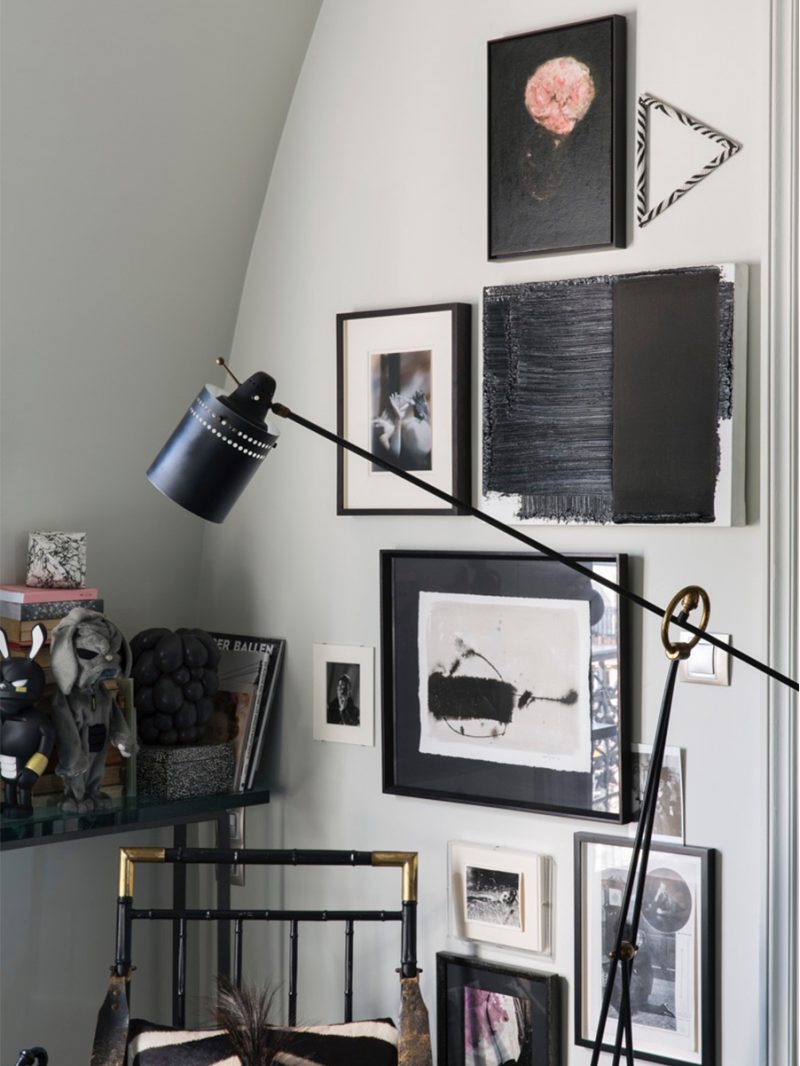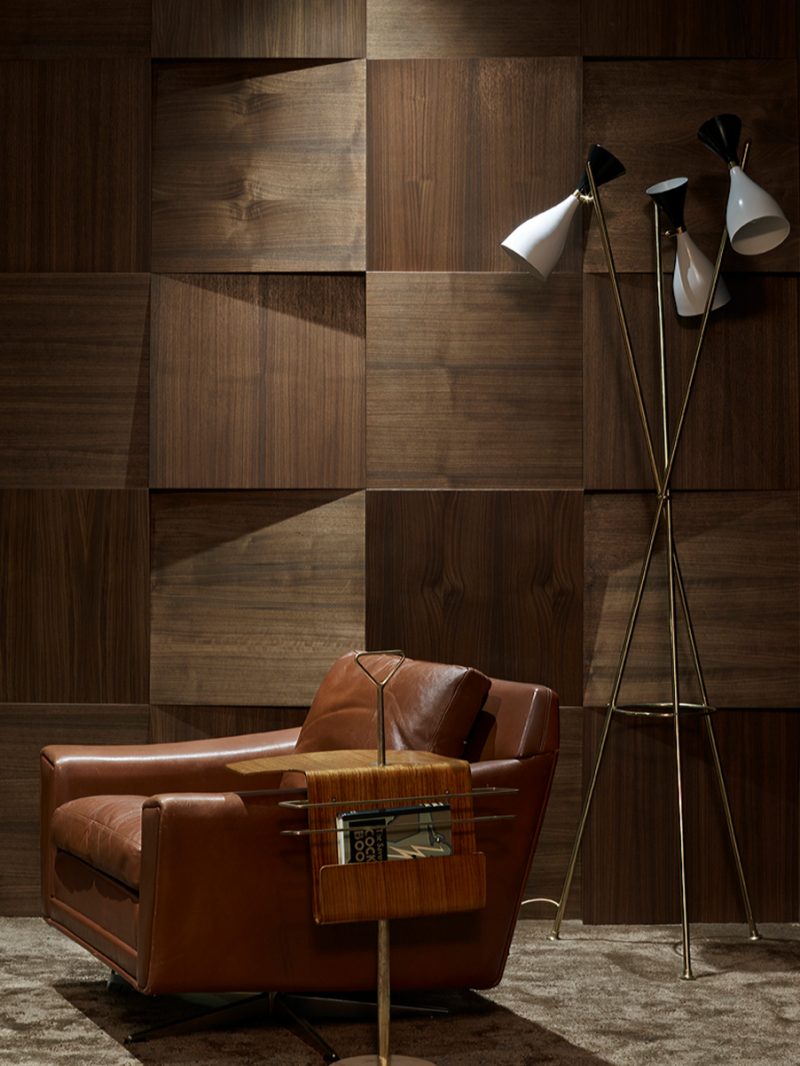Designing Bathrooms
When it comes to bathrooms, or more specifically, the design thereof, it is the careful, technical consideration of each and every facet, from the placement of amenities and light fixtures to adequate sealing and drainage, is essential to the success of the space. After all, this is a space, regardless of how you choose to appoint it, that will always be about functionality, so getting the ergonomics right is of vital importance.
It is only when these simple practicalities are paid the necessary attention that the room gets a seamless finish that speaks to a sense of luxury.


With your floor plan set out, it’s time to consider the narrative of the room and in the case of bathrooms this is almost always pre-determined by the client. This is a personal space that has to be tailored to a specific set of needs and routines. Just because its grounded in functionality doesn’t mean that a bathroom’s only option is to be fitted as the so-called ‘spa’; it can be whatever you make of it. Draw inspiration from your surroundings, a favourite hotel or a particularly memorable holiday and let that guide you to an aesthetic, be it Victorian, industrial or monochrome.
After you’ve decided on this, the style of materials has to follow carefully. The golden rule is simple: no more than three finishings – and those include paint and sanitary ware. This is especially true in smaller spaces where the risk of over-saturation is very real. Add interest and texture into a space, while keeping it relatively clean, by celebrating the materials you choose to use. So, if you’ve opted for a chamfered porcelain tile, for example, apply it from floor to ceiling to maximize its impact or if you’re using a paint colour, choose something bold and unconventional. Keep in mind that this isn’t a room in which people spend a lot of time (this is especially true of the guest bathroom) so it’s the ideal opportunity to create a striking visual experience.

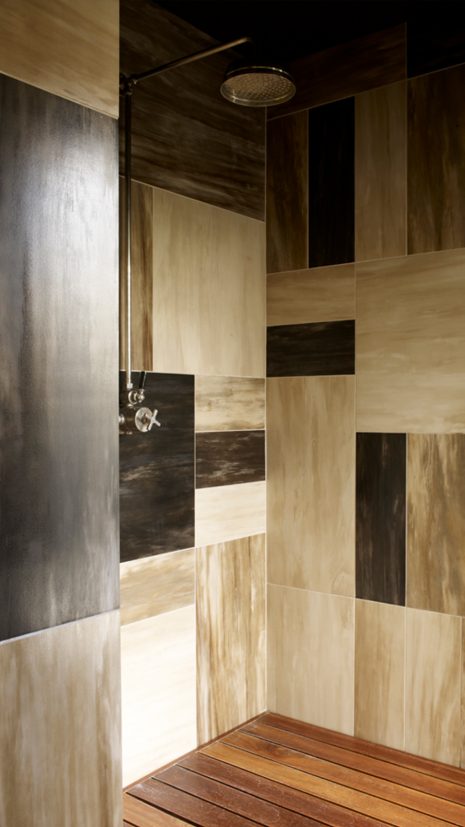

Draw inspiration from your surroundings, a favourite hotel or a particularly memorable holiday and let that guide you to an aesthetic, be it Victorian, industrial or monochrome.



Decorating the bathroom is also a time to be inventive and unpredictable. Instead of something generic why not convert an old farmer’s table into a vanity? Pairing flea market finds, such as mid-century light fixtures flanking a gilt antique mirror, will add an eclectic soul to a room. You might also consider installing bookshelves or hanging black and white art from floor to ceiling to create a gallery like space. Another option is to appoint the bathroom so that it becomes an extension of the bedroom and dressing room, in effect creating one multi-chambered space.
Unlike other rooms, the bathroom has never been afforded much imagination in the past, which is something that has largely contributed to its status as an austerely utilitarian space. However, with a rational outline that is filled in with a heady dose of creativity it can become something that demands to be noticed and a veritable conversation starter.


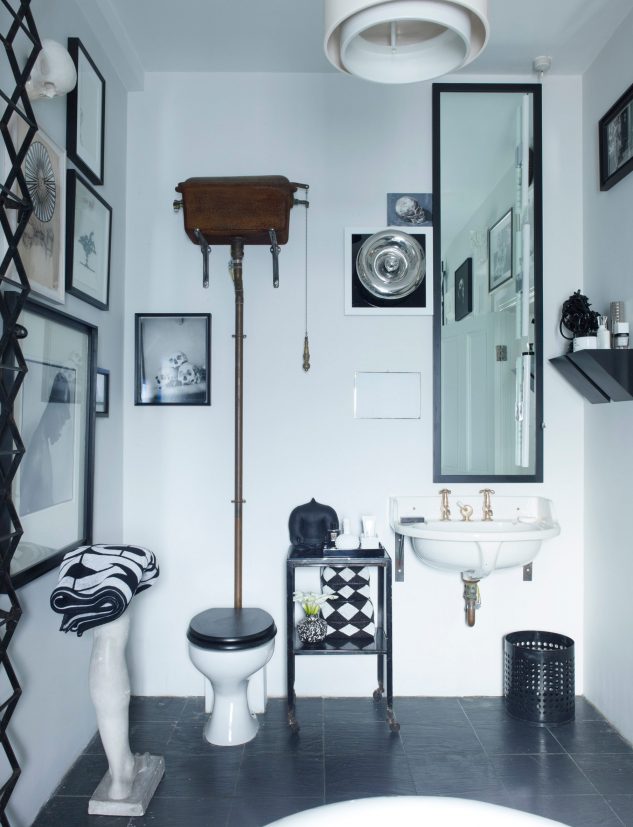

...consider installing bookshelves or hanging black and white art from floor to ceiling to create a gallery like space.

